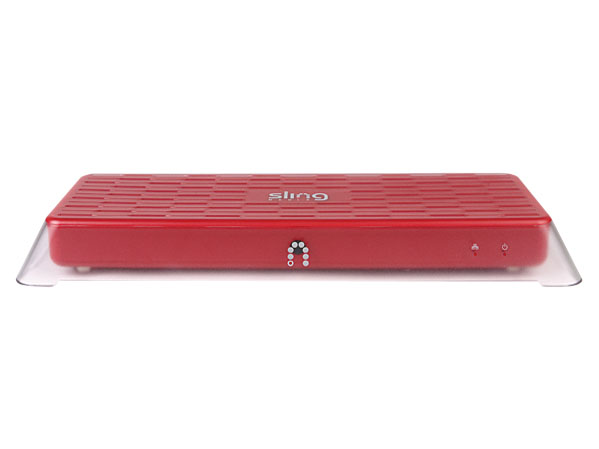TechRadar Verdict
An easy-to-use and well thought-out product that addresses many of the problems of the first-generation model
Pros
- +
Relatively easy to configure and use
Good input connectivity
Cons
- -
Results depend on available bandwidth
Vile looks
Why you can trust TechRadar
It's amazing how quick the internet has developed. The era of expensive dial-up connections and 486-based PCs wasn't much more than a decade ago. So what the Slingbox Pro makes possible would have been utterly inconceivable back then; a device that allows you to catch up with your TV wherever you are. Who'd have thunked it?
This second-generation Slingbox Pro has an in-built TV tuner that caters for both analogue and digital reception, plus a barrage of analogue AV connections. There's also a plug-in infra-red 'wand' for remote control of set-top boxes and other sources.
An Ethernet port jacks the Slingbox to your broadband router, and thus to the 'net at large. Special Windows (XP/Vista) or Mac (OS X) software is employed for configuration. The first time you use this 'SlingPlayer' program, you're taken through a friendly step-by-step process.
It deals with any firmware upgrades plus configuration of the internal tuners, AV inputs, infra-red codes and a choice of manual or automatic router configuration. The latter worked first time - this will come as a pleasant surprise for those who had trouble getting the original Slingbox to work properly.
SlingPlayer also attributes a unique 'player ID' to your Slingbox Pro, which is required whenever you try to access your content - whether you're viewing on your local network or in a different country altogether.
After selecting the desired source, viewing takes place within a (maximisable) window, with (stereo) sound, and a maximum resolution of 640 x 480. Hi-def connectivity is provided mainly for the benefit of countries like the US where HD broadcasting is widespread, and downscaling to the standard-def resolution at which the service operates takes place inside the box.
Using the Sky+ infra-red code, I tried Sky HD (via component) at both 720p and 1080i, and it worked fine - kudos to the accurate onscreen 'virtual' representation of Sky's handset!
Sign up for breaking news, reviews, opinion, top tech deals, and more.
SlingStream optimises the bitrates (and thus quality) 'on the fly' according to the available bandwidth - the manufacturer recommends a minimum upload speed of 256kbps, and at least 128kbps for 'receiving'.
On a LAN, quality is very good indeed with few artefacts and acceptable sound. A colleague, subscribing to a different ISP and located about 40 miles away, installed the SlingPlayer on his broadbanded PC. After logging in, he reported lacklustre resolution, artefacts and audio dropouts.
Conclusion
The Slingbox Pro is an easy-to-use and well thought-out product that addresses many of the problems of the first-generation model. Its multiplicity of AV inputs gives rise to impressive flexibility (you could dedicate one to a security camera, for example).
However, in performance terms you shouldn't expect miracles (even with buffering). But if you travel abroad often, British TV at any quality is probably better than none at all...
Tech.co.uk was the former name of TechRadar.com. Its staff were at the forefront of the digital publishing revolution, and spearheaded the move to bring consumer technology journalism to its natural home – online. Many of the current TechRadar staff started life a Tech.co.uk staff writer, covering everything from the emerging smartphone market to the evolving market of personal computers. Think of it as the building blocks of the TechRadar you love today.
